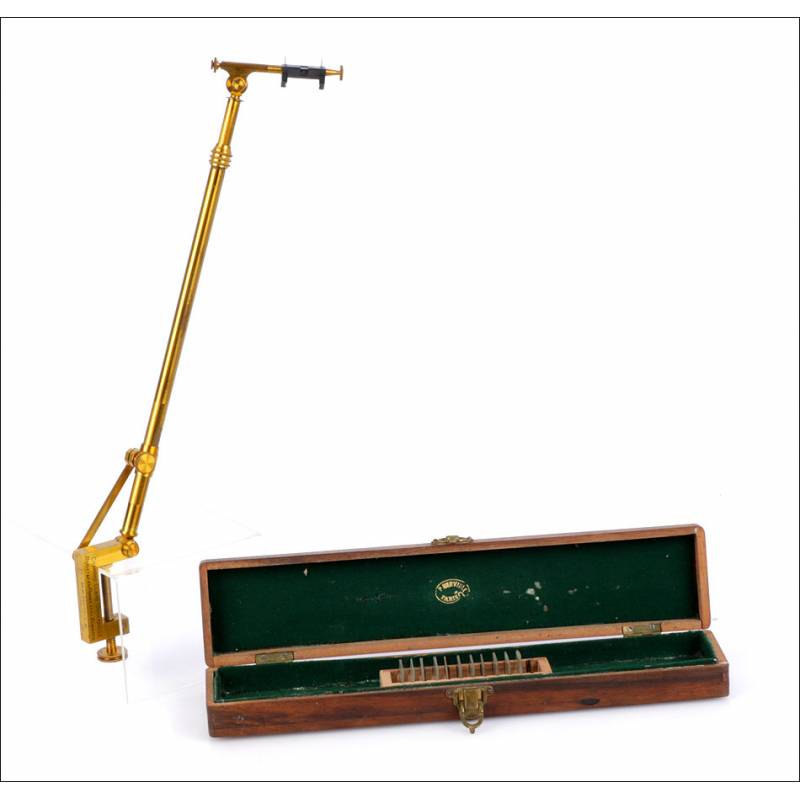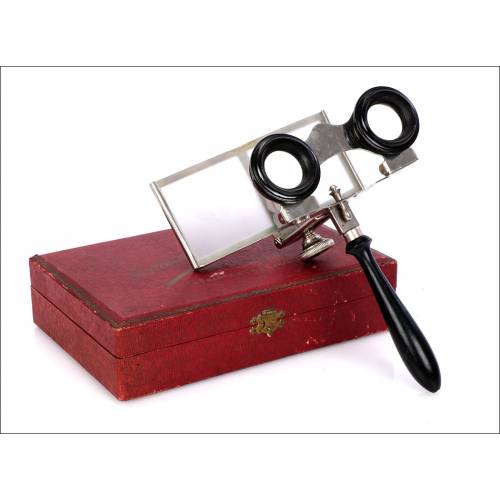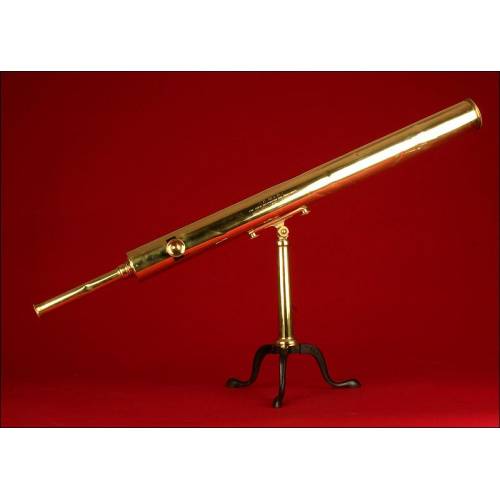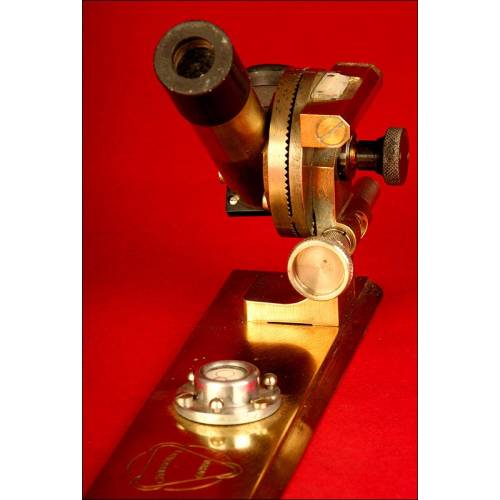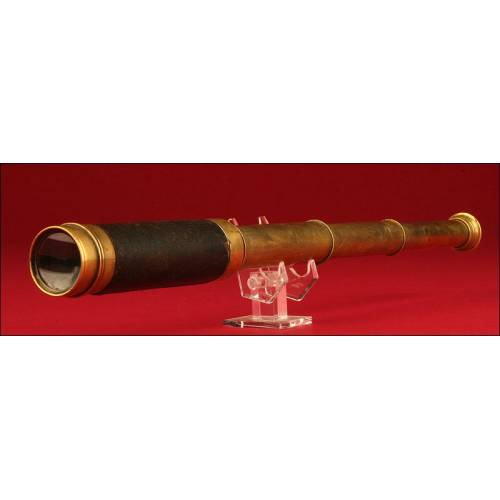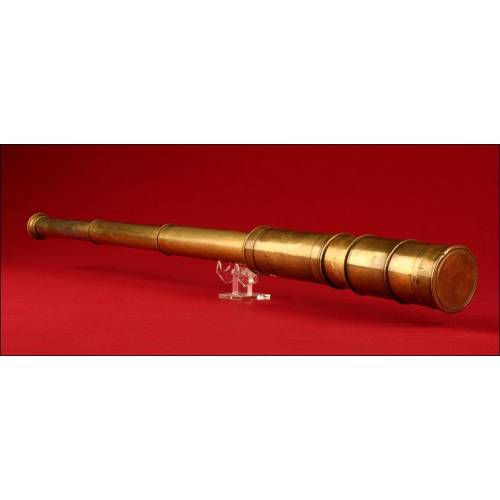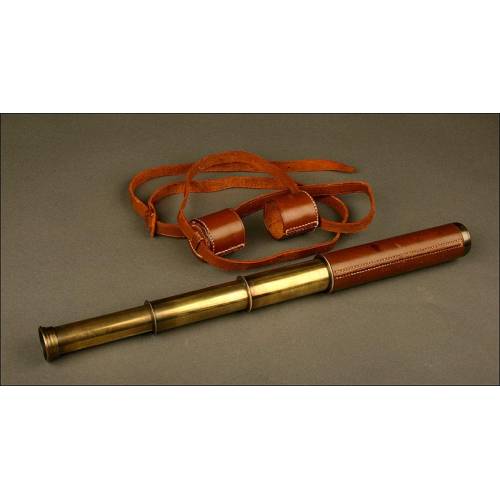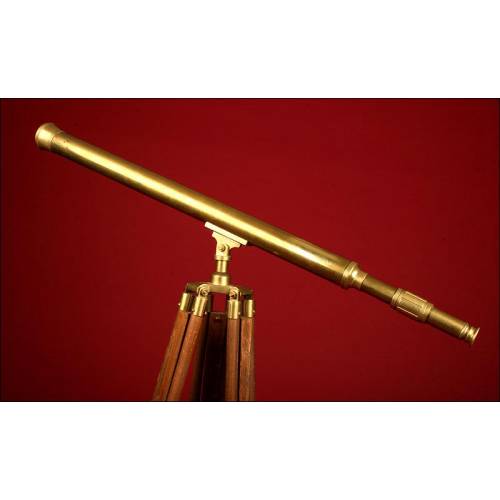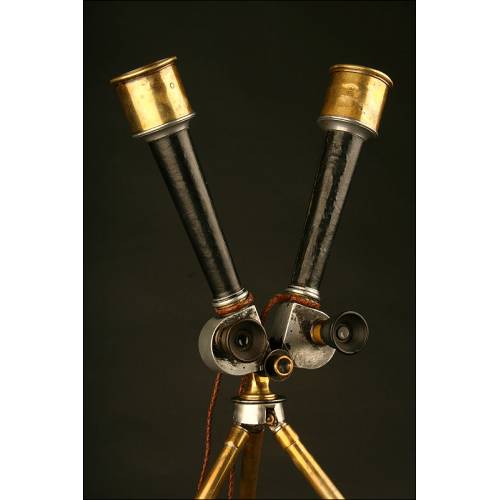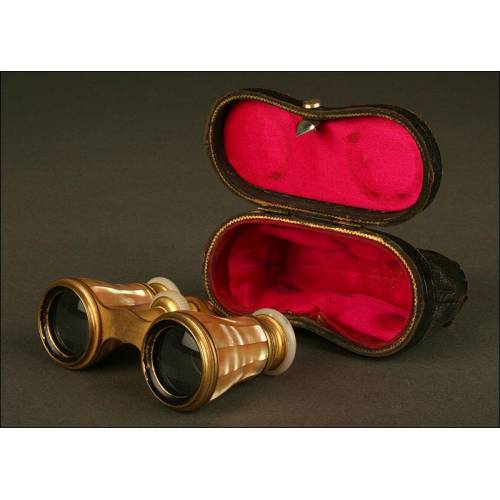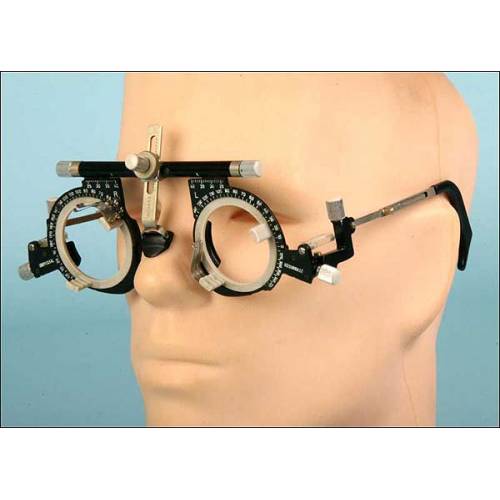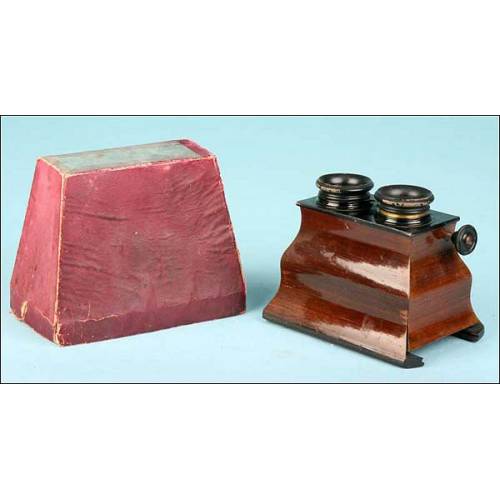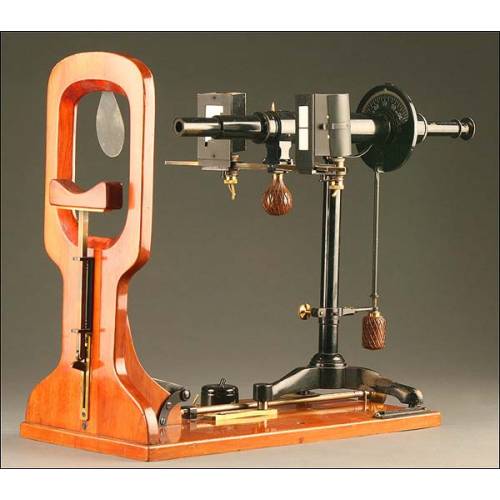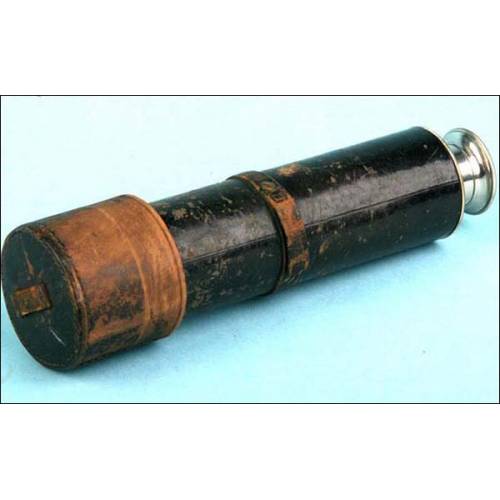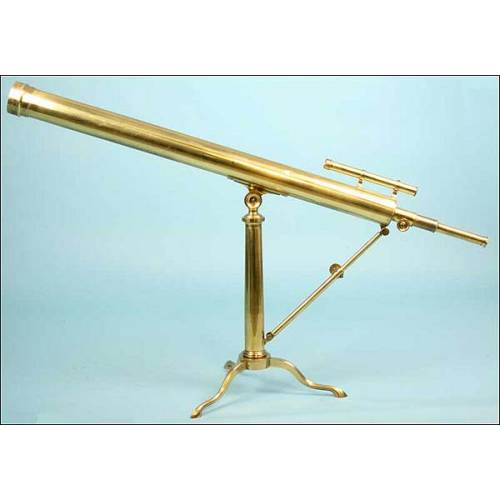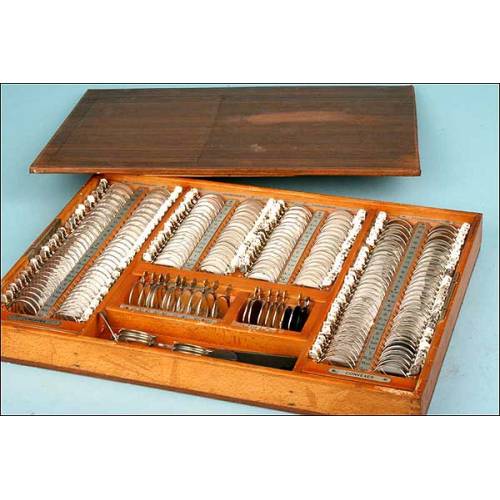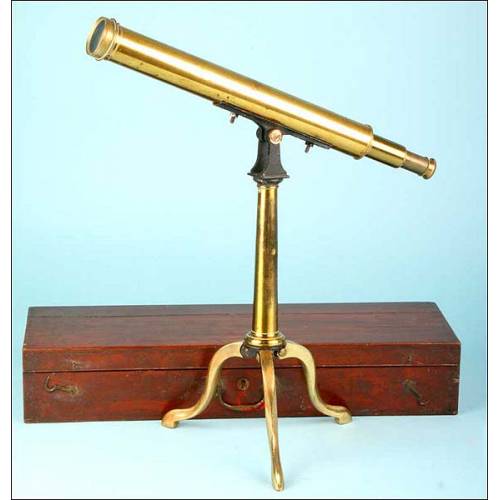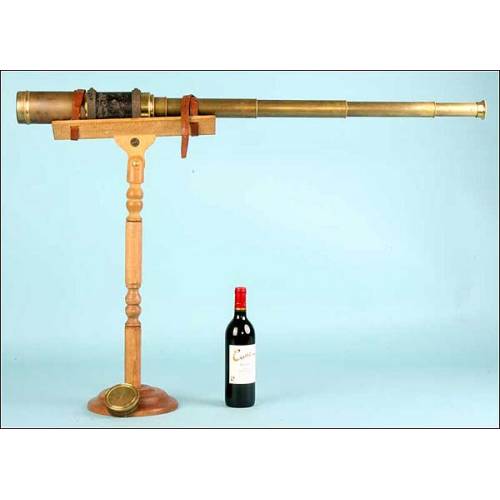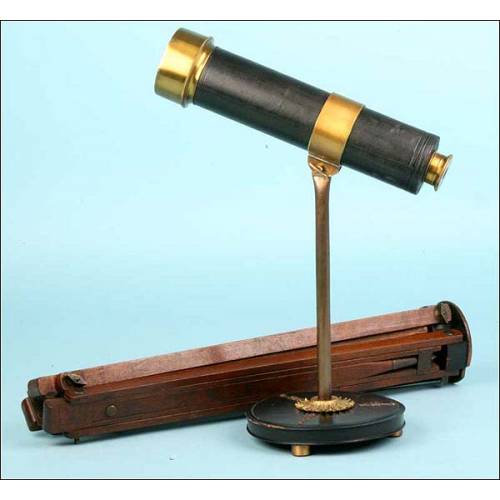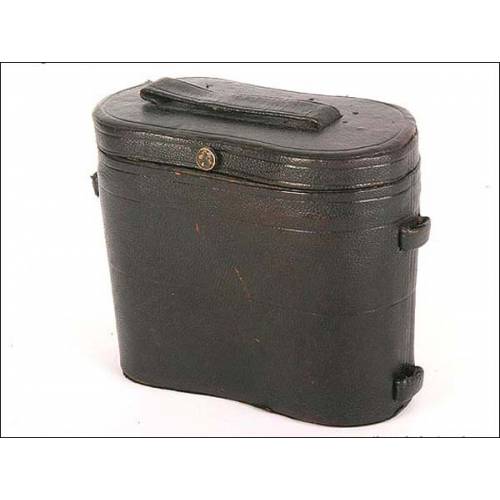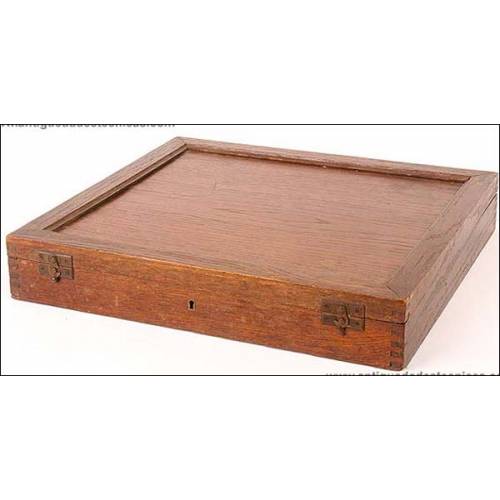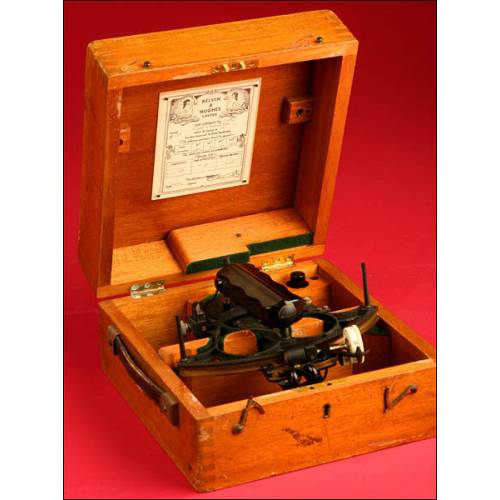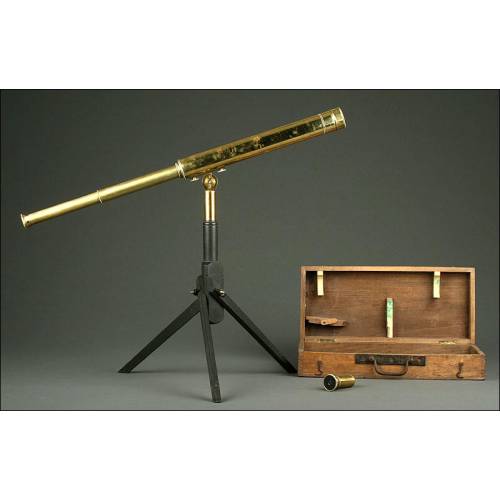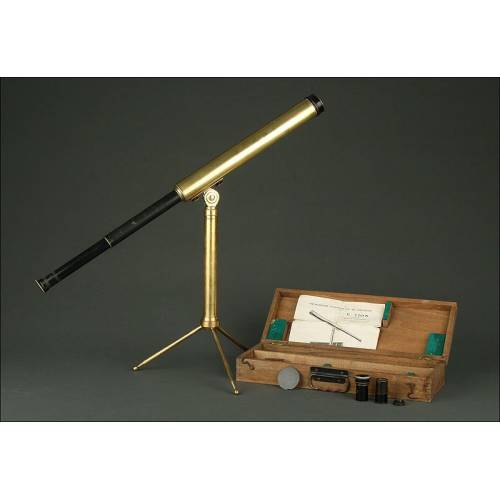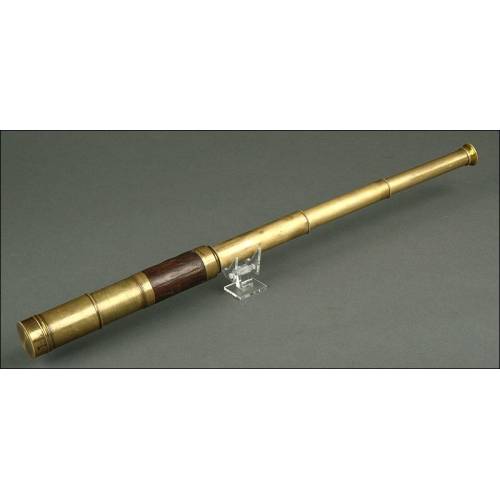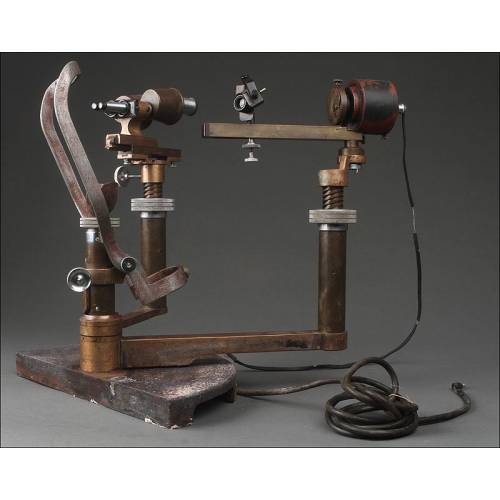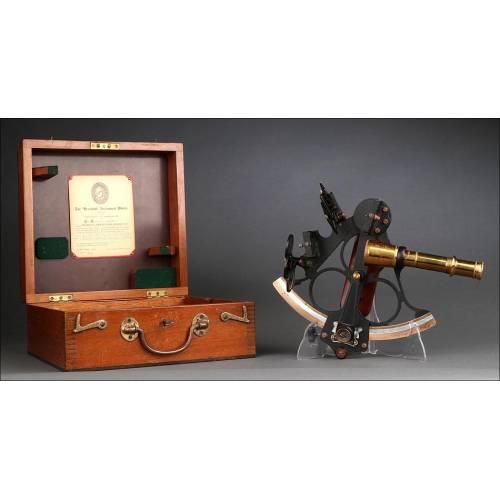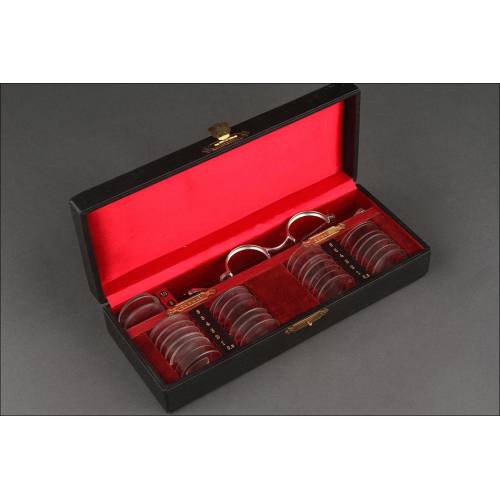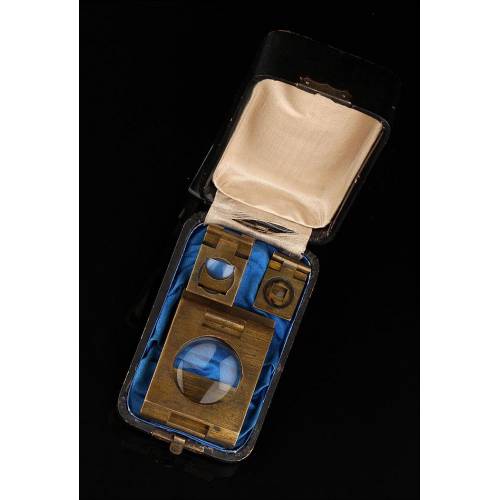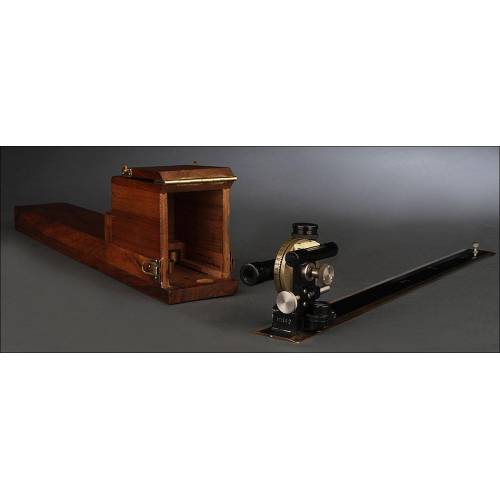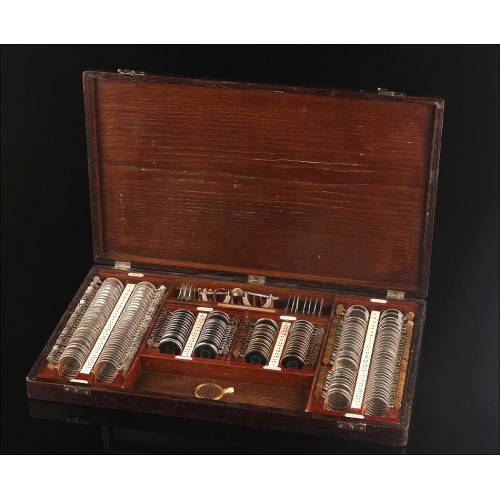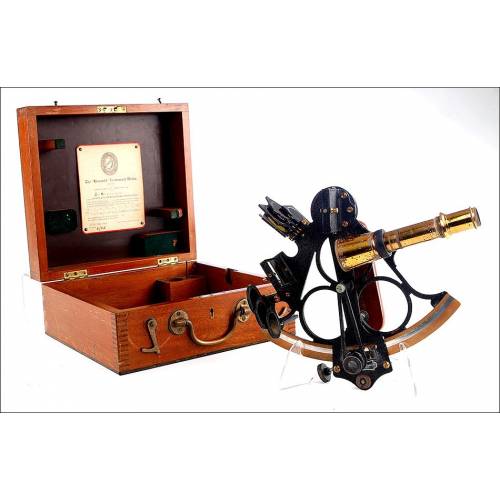C-627
Antique Berville Camera Lucida. Complete. France, 1890
Fantastic P. Berville camera lucida, complete and in its original case. Over a hundred years old and in perfect working order.
Sold!
Antique brass camera lucida signed by P. Berville, made in France in 1890 and in good condition. This fascinating drawing mechanism comes in its original storing case together with a complete lens set, essential to operate it. The camera lucida is entirely made of brass; the metal looks really fine and preserves the original transparent lacquer finish that provides it with a very special color and glow. The clamp designed to fix the camera lucida to the drawing table bears the manufacturers signature engraved in the metal surface: P. BERVILLE 25, Chauseé dAntin, Paris.Engraved on the other side of the clamp we can also see the following inscription which describes the model: CHAMBRE CLAIRE UNIVERSELLE BREVETÉ EN FRANCE ET LETRANGER. Both inscriptions are engraved by hand with clear and visible lettering. As stated before, with the camera lucida comes a complete lens set organized in a wooden stand. The camera lucida and the lenses are stored in the original case, a fine solid-mahogany wooden box with a brass lock. Outside the wood is in very good condition, while inside the box is covered by a nice green velvet lining. Printed on the lids lining we can see the manufacturers logo in golden lettering. Beautiful and original, this antique brass camera lucida signed by P. Berville will stand out in a good collection of turn-of-the-century scientific and mechanic pieces. Measurements: Maximum Length: 18.5 in / 47 cm.Camera Lucida - History The first camera lucida was created in the 19th century and was intended to draw objects, landscapes and portraits while keeping the exact proportions. Its operation was first described by Johannes Kepler in his work Dioptrica (1611), but there is no evidence of any camera lucida being constructed in those days. The first one ever made was designed by William H. Wollaston in 1807; he was also the one who gave it its name (camera lucida, which in Latin stands for dark room). During the 19th and part of the 20th, these devices became hugely popular. Curiously, in 1833 the photo pioneer Willim Fox Talbot tried to draw images from life using a camera lucida. As he was not satisfied by the outcome, he decided to search for a method which would print images from life in a long-lasting way. It was then when photography was born.

